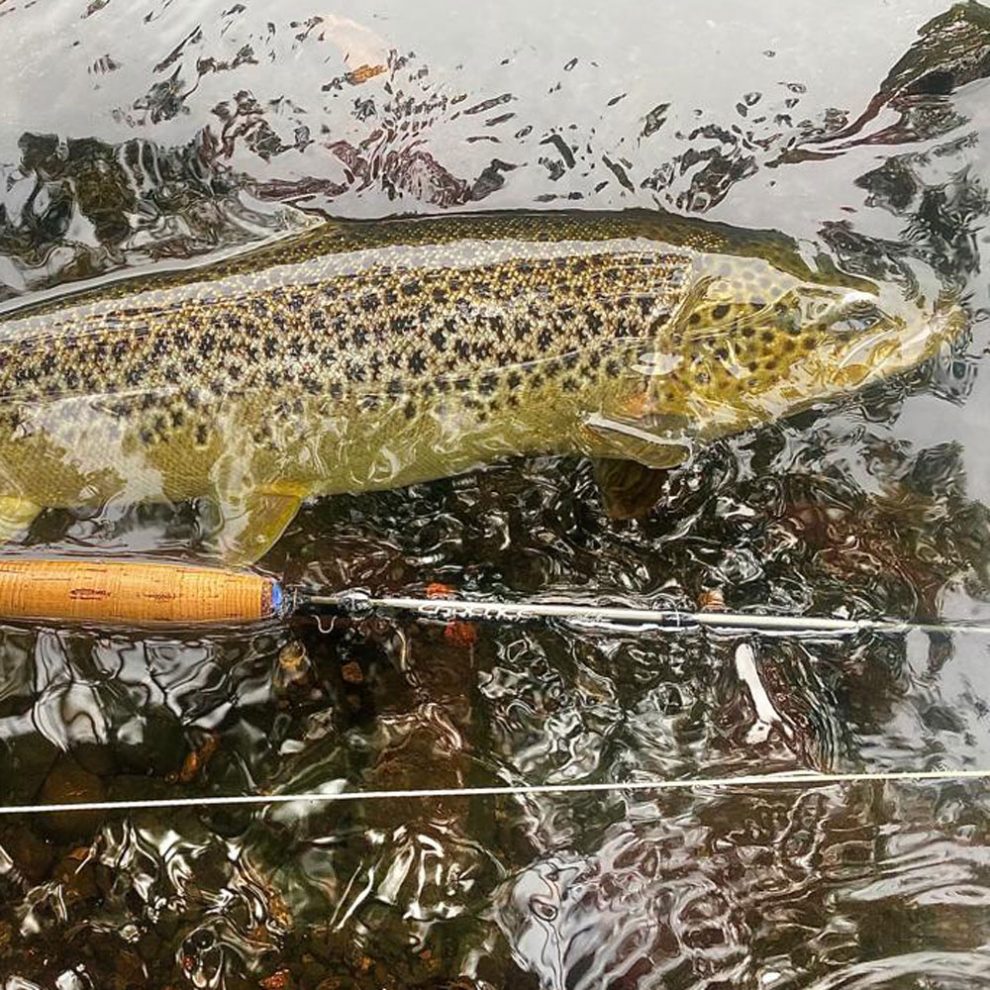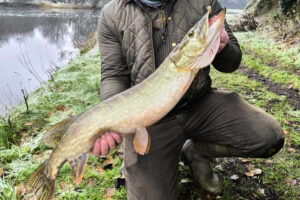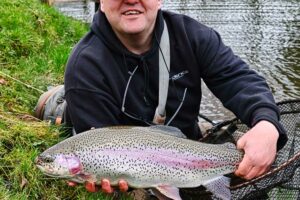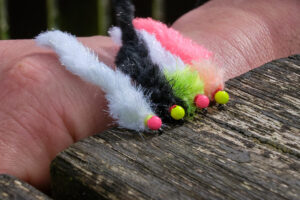I have often fished for feeding trout and grayling with nymphs. My father showed me at an early age how to. We would make a cast up stream and retrieve the fly line at the same speed or, at times, slightly faster than the current. Watching and feeling for takes. We would fish like this with unweighted or weighted nymphs dressed leaded or with a brass head bead. We’d fish these nymphs on the point, often with a spider pattern on a dropper.
Even with all our modern tactics, this is still a great way to fish. It will catch countless feeding fish in the right type of water. I love using the Cadence CF20 SM 10ft #3 rod for this kind of fishing. When fishing in Norway, I wouldn’t be without the Cadence CF20 10ft #5. This rod is ideal for big, windy rivers and is versatile. I can dry fly fish with it, giving me more leverage when playing fish.
For the last few years, with the invention of tungsten beaded nymphs, there have been great advances in fishing flies. Tungsten is denser than brass, allowing tungsten-beaded nymphs to sink quicker. In faster rivers or deeper pools, you can get the fly to the bottom, where the fish feed on natural nymphs and larvae. Today, tungsten nymphs are one of the most popular river fly patterns, with classic brass bead heads now replaced with tungsten variations in all possible sizes, colours, and shapes.
Tungsten helps create super-efficient nymph patterns that can fish in the strongest river stream and the deepest river pools. Fly fishing competitions have helped their development. Anglers from Poland, France, Spain, Italy, Belgium and the Czech Republic helped massively to develop these nymphs and the techniques used to fish them. So much so that it is referred to as Euro Nymphing and is massive worldwide for trout and grayling.
With all that said, what if your quarry is not really feeding, like most migratory species in rivers, such as salmon and sea trout?
Tungsten beaded nymphs have been a total game changer for me in this regard. Close to home, I regularly fish for Lough Neagh Dollaghan. Dollaghan are much like sea trout in a spawning river. They will occasionally take food, but they are not as greedy as a river trout, and they will fast.
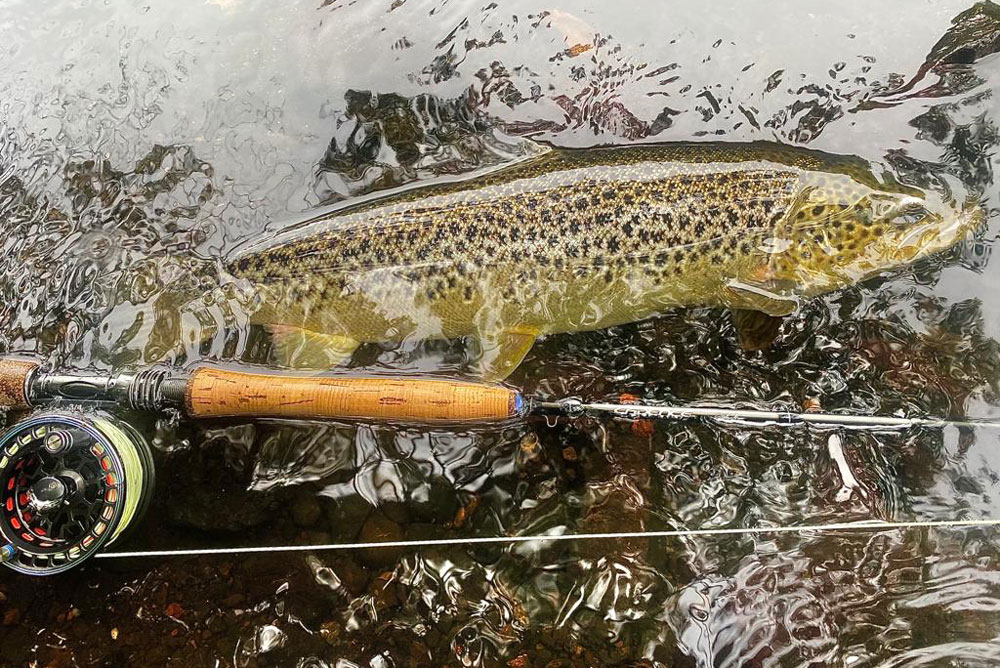
I realised just how effective tungsten beaded nymphs were when I caught salmon on trout nymphs on the rivers Drowse and the famous river Mourne at Barronscourt Estate. I was lucky enough to be asked by the Loughs Agency to fish a famous salmon water to see if trout fishing was viable for tourism. Throughout my time here, I caught salmon more than once on these trout nymphs. I also started catching Dollaghan regularly on tungsten nymphs, which has become a top tactic many anglers use.
So why are these tungsten nymphs such a game changer for catching big Dollaghan?
Well, for many years, we would catch these trout when the water was in spate during the day. However, if the river was running clear, we would more typically fish at night. This is perhaps still the way to go for big fish and is similar to sea trout fishing at night. For this, my go-to rod is the Cadence CF20 SM 9ft 9in #8.
Night fishing does take its toll on an angler. You need to be able to change your body clock if you want to be successful. I recently re-read Sea Trout Fishing by Hugh Falkus. This book is a bible and covers everything the would-be sea trout fisherman could want to know. He looks at everything from the sea trout’s behaviour, the biology, tackle, casting – as well as covering fly fishing, spinning and even bait fishing. It’s an informative and entertaining read for any angler, let alone a sea trout angler. A large part of this book is dedicated to night fishing, and the techniques described are useful not only for sea trout but for the Dollaghan angler too.
Falkus was lucky. He lived beside a river, was a full-time writer, and could plan his work around his fishing. For the average angler with a family and a job, it can be a tiring experience. I fished at night for years. It was fantastic. Most of my biggest Dollaghan were caught at night using traditional sunk-line methods. Now though, with tungsten, we can regularly catch during more sociable hours, in daylight. Conditions will always play a massive part in our success, but if we know the spots and the depths the fish are at, we can hold our nymphs at these depths and entice these non-feeding fish into an aggressive take. As my father used to say, salmon and Dollaghan don’t have fists, but if you keep annoying them, your chances of catching them suddenly increase. They can’t help but lash out with a bite when provoked enough. The key though is not to spook them.
There are different ways you can present your flies, depending on the stretch of river you’re fishing. Euro Nymphing tackle and tactics are fantastic in deep, fast streams or when fishing your nymph under a pimp. A pimp is a small float that works well in slower, deeper places. Once you find the right depth and you know where the fish hold, it makes for easy fishing. It is deadly, but it is like marmite. Some anglers love it, and some don’t. It can make things a bit too easy when fish are stacked up. It has even been banned on some waters. Personally, I like to fly cast, be on the move exploring the river and get away from people, so it is a tactic I rarely use.
Having said that, I think using the pimp could be a great teaching aid, helping to get people into fly fishing, and for kids, it is perfect. It also opens a lot of water that might be hard to fish with normal tactics.
When fishing and retrieving my flies through small pools and pocket water, I often fish with a tungsten beaded nymph on the point and a traditional fly on the dropper. This opens more water for me and allows me to target fish in areas I wouldn’t usually be able to fish. I have found it very successful in slow-moving and deeper areas of the river. A strip and draw retrieve can work well, as does a figure of eight with a varied retrieve rate.
Patterns wise, I’m not sure if it matters that much. Most tungsten beaded nymphs that work for trout will also work for Dollaghan. We have our own favourites, and mine, like many fly concoctions, comes with a wee story.
I had been fishing years ago with a heavy hare’s ear and had some success with salmon on this pattern in low water. It also worked on the local river for Dollaghan and trout, but I wanted a nymph type pattern that was tempting on my local rivers during the day.
Dollaghan would always take flies with a flash in them at night. The best patterns were silver, gold or pearl bodied. I started dressing some nymphs with a bit of flash. It’s probably unfair to call these flies nymphs as they are not made to imitate a nymph. They are created to cause a reaction. Instantly they worked for me on the rivers, no matter what nymphing method I used. As an angler who likes to move, I found them deadly while pulling or retrieving, not a nymphing tactic at all.
I never named this fly. It’s just a fishing fly that worked. My friends Marc Lite from Scotland and Espen Eilertsen from Norway started calling it the Belfast Nymph. The tactic and fly worked well while we were fishing for grayling in Norway. This pattern is meant to be cast and retrieved with its flash and hackle pulsating to cause an aggressive reaction in the fish to lash out and take it.
Finally, to end, a quick tip when casting with heavy flies on a trout rod. It helps if you can cast and use a haul on your back cast and slip line at the right time. This will make it easier to cast. Please remember that a tungsten bead can damage your rod if it hits your blank, so be careful when casting. Starting with a shorter tapered leader can help too.
I hope you enjoyed reading this blog about my journey of discovery with tungsten beaded nymphs. It is a fantastic tactic that can turn a blank day into a good day. Try it. It also means you can get to bed at a reasonable hour!
Tight Lines – Stevie.
How to tie the Pulling Nymph (Belfast Nymph)
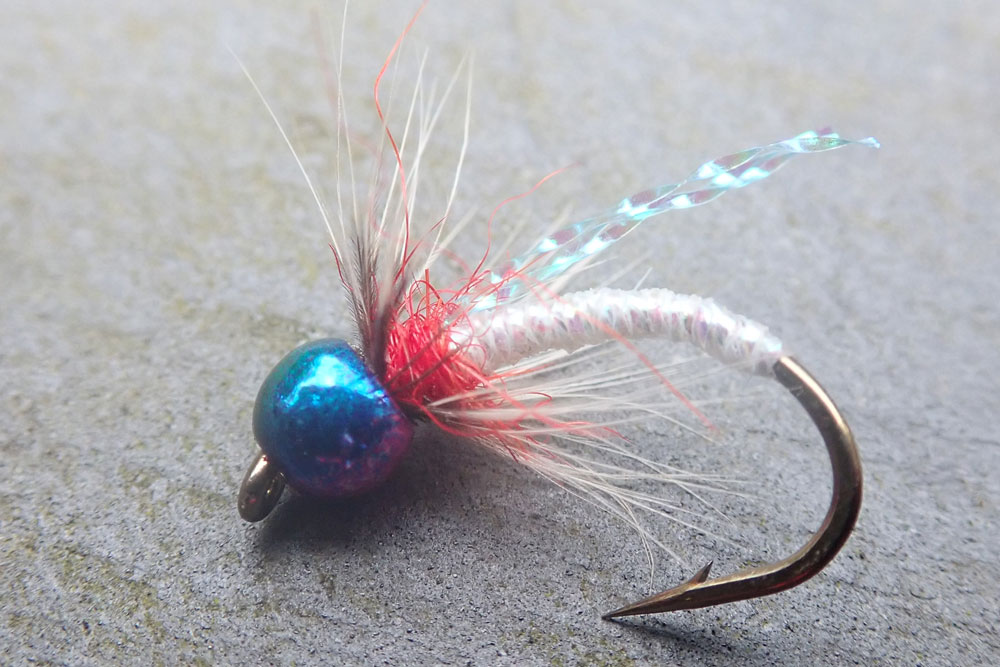
Thread: Semperfli Nano Silk.
Hook: Partridge K4A Grub / Shrimp 8
Bead: 3.2 Tungsten (all the colours seem to work though, rainbow, pink, red, yellow and orange are great)
Body: Pearl, Silver or Gold braid.
Rib: Fine Silver or gold wire (makes the fly more durable)
Thorax: Red or Orange fur or synthetic with a few strands of Twinkle Flash.
Hackle: Badger hen or Greenwell hen.

